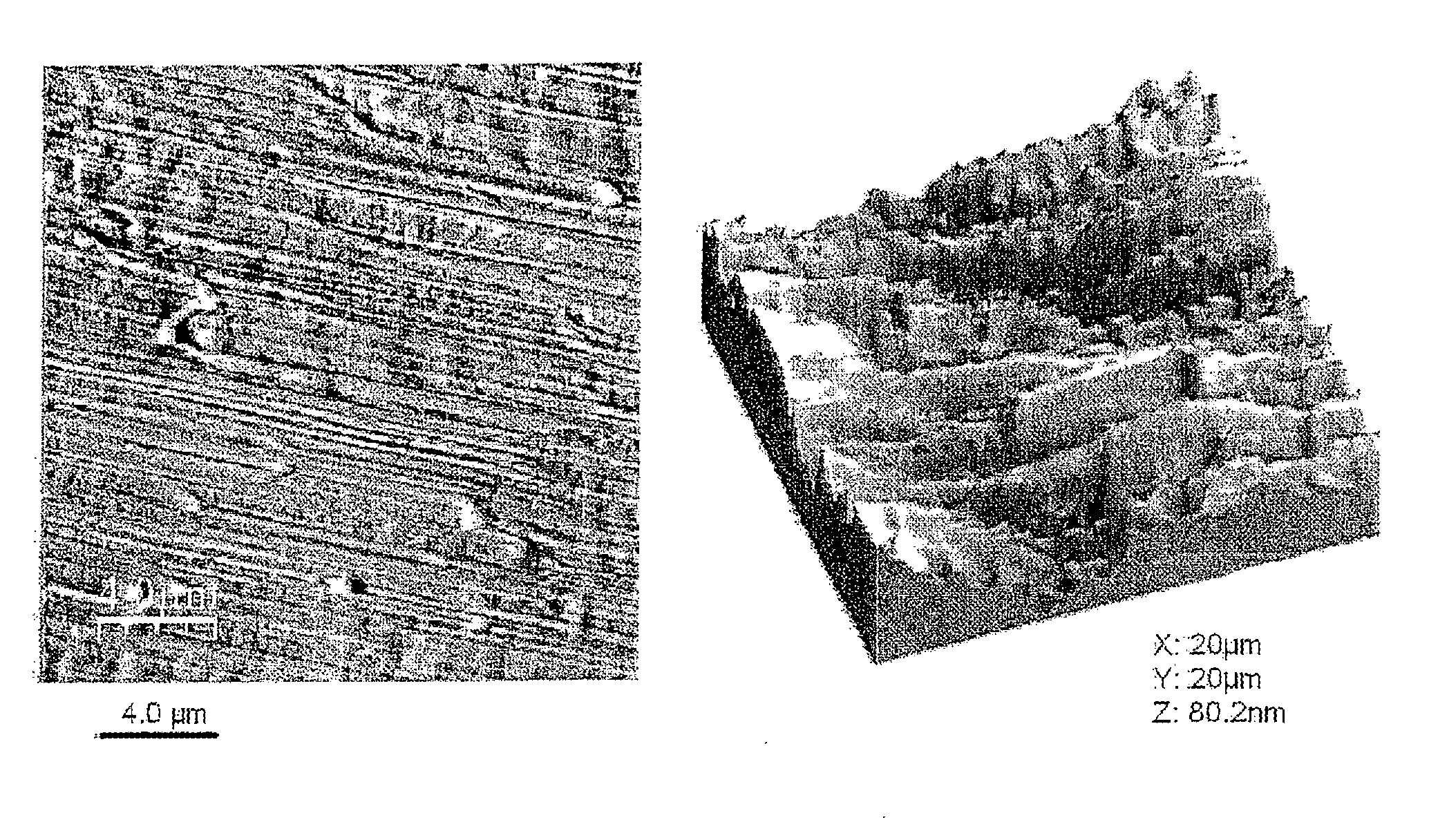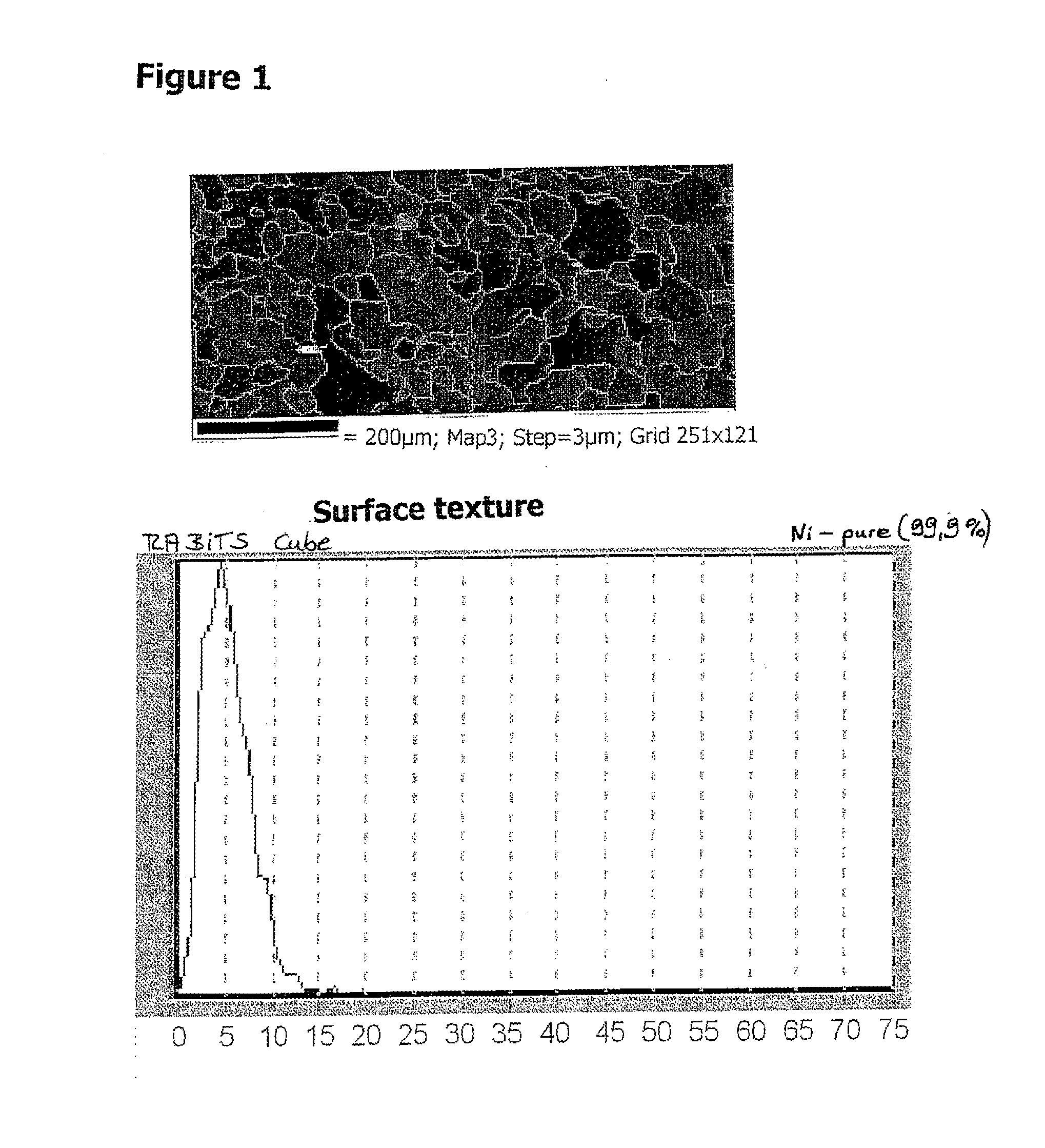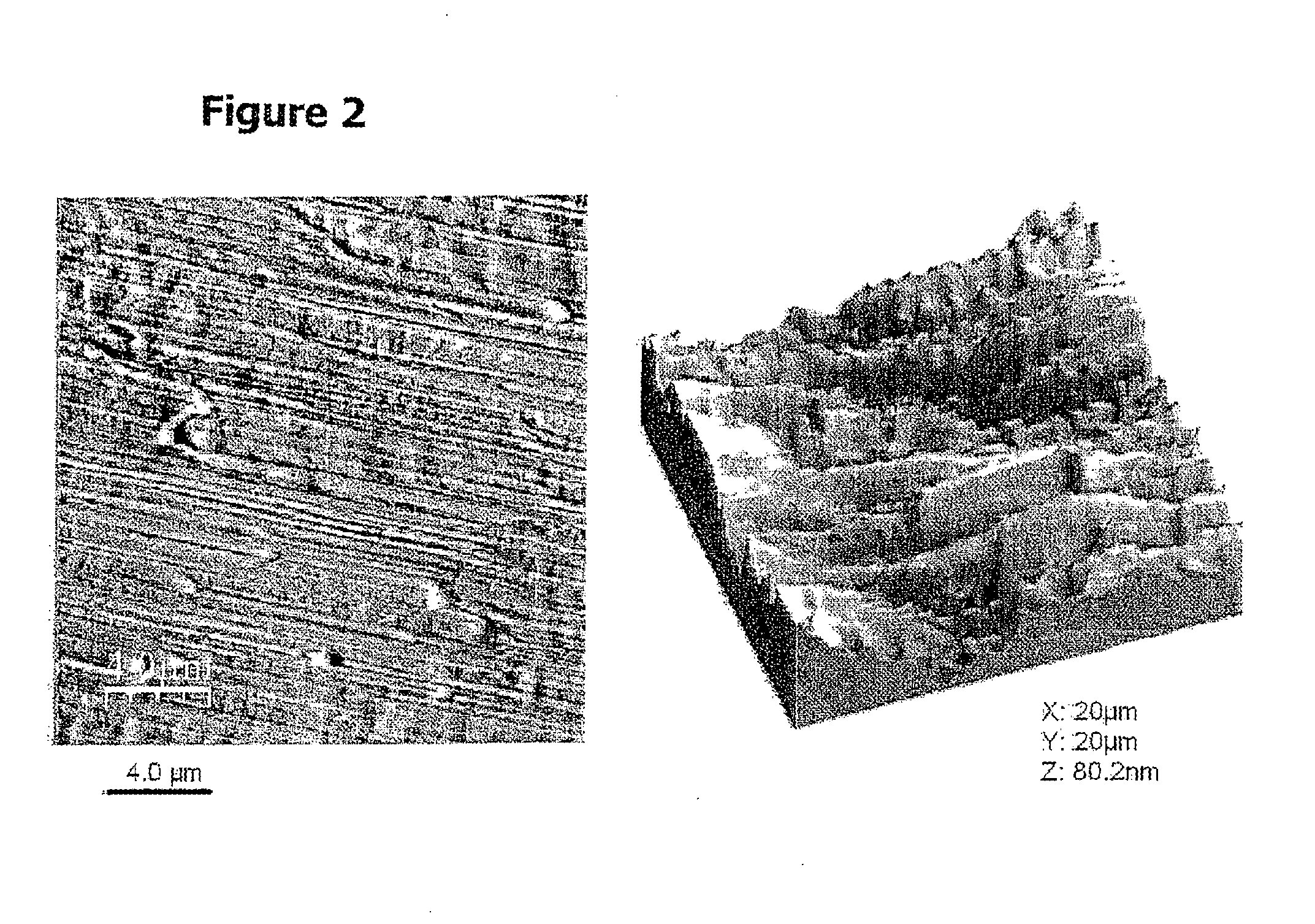Method for producing metal substrates for hts coating arrangements
- Summary
- Abstract
- Description
- Claims
- Application Information
AI Technical Summary
Benefits of technology
Problems solved by technology
Method used
Image
Examples
Embodiment Construction
[0058]The production of the metal substrate according to the invention for a high-temperature coating arrangement is based on an industrially produced biaxially textured metal substrate, for instance in the form of a tape or wire.
[0059]The substrate according to the embodiment comprises a nickel alloy containing 14% by weight of tungsten and 100 ppm of magnesium. The material was melted in a vacuum furnace and subsequently subjected to hot rolling, for instance down to a thickness of 5 mm or 3 mm, and then subjected to cold rolling, preferably involving a reduction of the thickness of the material with a reduction degree of 5-40% or 10-30%, particularly with a reduction degree of approx. 20%, so that based on the above-mentioned material, the thickness of the material can amount to approx. 80 μm or approx. 60 μm. Here, the reduction degree corresponds to the conversion degree in the direction of the sheet thickness. Cold forming thus amounted to ≧95% by volume. The tape thus obtaine...
PUM
 Login to View More
Login to View More Abstract
Description
Claims
Application Information
 Login to View More
Login to View More - R&D
- Intellectual Property
- Life Sciences
- Materials
- Tech Scout
- Unparalleled Data Quality
- Higher Quality Content
- 60% Fewer Hallucinations
Browse by: Latest US Patents, China's latest patents, Technical Efficacy Thesaurus, Application Domain, Technology Topic, Popular Technical Reports.
© 2025 PatSnap. All rights reserved.Legal|Privacy policy|Modern Slavery Act Transparency Statement|Sitemap|About US| Contact US: help@patsnap.com



